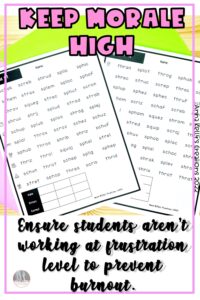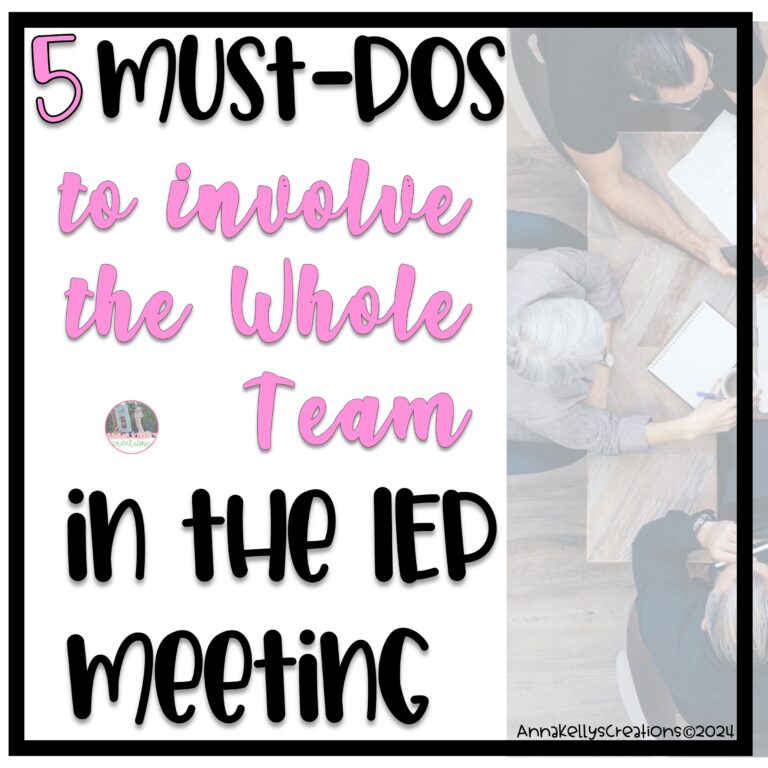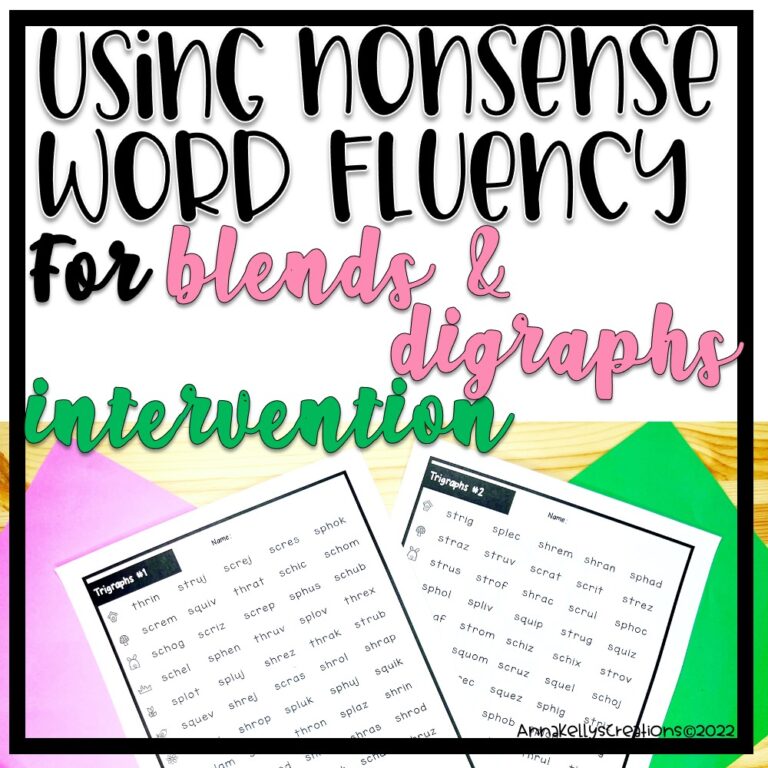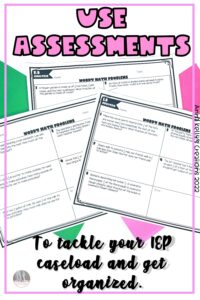 Every year you know that it’ll happen. You’ll have the normal back to school checklist to complete, a classroom to get in order, and a caseload to tackle. And if your caseload looks anything like mine you usually have the following tasks hanging over your head:
Every year you know that it’ll happen. You’ll have the normal back to school checklist to complete, a classroom to get in order, and a caseload to tackle. And if your caseload looks anything like mine you usually have the following tasks hanging over your head:
- New students to meet and get to know
- IEP goals to decipher
- Objectives to learn
…and these are just the main ones! Does any of this look familiar to you? I’m sure that it does!
If only you could get your caseload under control early so that you don’t start the school year off feeling like you’re drowning.
What if I told you that you can?
Keep scrolling to learn how I master my caseload and start the year off prepared and armed with the data needed to lead IEP meetings, create intervention groups, and complete progress reports. Check, check, check. That’s me checking off all of the future tasks that I know will be a lot less complicated because I got my caseload organized early. Want to learn how I do it? Keep reading!

Assessments are Your New Best Friend
When a new school year rolls around or a new student shows up with an IEP, I like to get a true picture of student abilities. To do this, I take a look at their goals and try to pinpoint their independent working levels for each one.
To do this, I give students a grade level assessment that correlates to the grade level of their IEP goals and objects. In order for this to be the right fit for students, they need to score between 60% and 80%. If they don’t, I continue assessing them, but instead I assess them using the grade level below if they score below 60%. I continue this process until students are able to score 75% or higher three times on a specific grade level. This shows me the students’ independent working level, we will then work on that grade level with the end of year goal to reach 1 years growth.
A friendly reminder: make sure you are working with students on the grade level at which they are learning. Most students will be working at a level below their actual grade level, that is ok that’s the purpose of intervention: to close the gap.
Prevent Assessment Burnout and Frustration
It’s important to note that if students don’t score a 75% or higher the first time, I go ahead and assess them using the next grade level down.
Once students reach that 75% or higher for a grade level, I know that their goal should be the grade above. So for example, if a student scored an 80, a 75, and a 90 on a second grade assessment, and a 50, 45, and 60 on a 3rd grade assessment. I would know that their intervention learning tasks need to be geared towards third grade. This is what I write as their goal
We need to be cognizant during this assessment time that we aren’t giving students frustration level work repeatedly. We want to keep student morale high so that we can find their independent level, and we can’t do that if we keep repeating the same grade level skills that they just found frustrating or by giving them multiple tests in one day. I recommend splitting the assessments over days to weeks so that students don’t get burned out by completing tedious or redundant tasks over and over. It’s important to incorporate activities for students to complete other than testing as well to reduce fatigue.

Thank Yourself Later in the Year
Even though assessing students using this process is time consuming, I promise that it is worthwhile. This process helps provide me with valuable data, especially for writing SMART goals. All of the data you collect not only gives you a more detailed understanding of where students are in the subject, but it also gives you data that can be used when presenting during IEP meetings or handling your ETR during review years.
As I said above, this data is also helpful because it helps you get to know your new students at the beginning of the school year. Sometimes we receive students with IEP goals that may not seem correct. By being thorough and assessing students, you can see if their IEP goals are a good fit. Because an IEP is a live document that can be modified, you may want to take a closer look, especially if the student you are assessing is achieving at a much lower or higher level that their goal indicates.
This data is also great to help you determine grouping for interventions. You’ll know which students should work together on which skills based on their levels. The assessments also give you insight on what interventions are best for individual students.
Once you’re ready for intervention check out my blog post on Word Problem Solving Intervention. I will help you with some other techniques rather than key words.
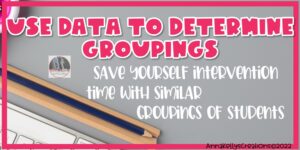
Go Gather that Data
I know this process sounds time consuming. Trust me, I do. But I know that you’ll be thanking yourself for all of the data that you already have on hand when the end of the first quarter rolls around and progress reports are due. And let’s be honest, that deadline comes much earlier than we expect it to every single time.
To help save some time I do have some assessments already created for purchase. Take a look in my store for ideas.
So, are you going to help yourself start the school year off right? All it takes is a little extra effort put forth up front, and your school year can flow smoothly.
Looking for more ideas on how to have a smooth beginning of the school year? Read my other blog post about an Intervention Specialists First Week of School.
Have questions about assessing your students? Comment below or feel free to email me at annakellyscreations@gmail.com. I’d love to help you start your year off right.

